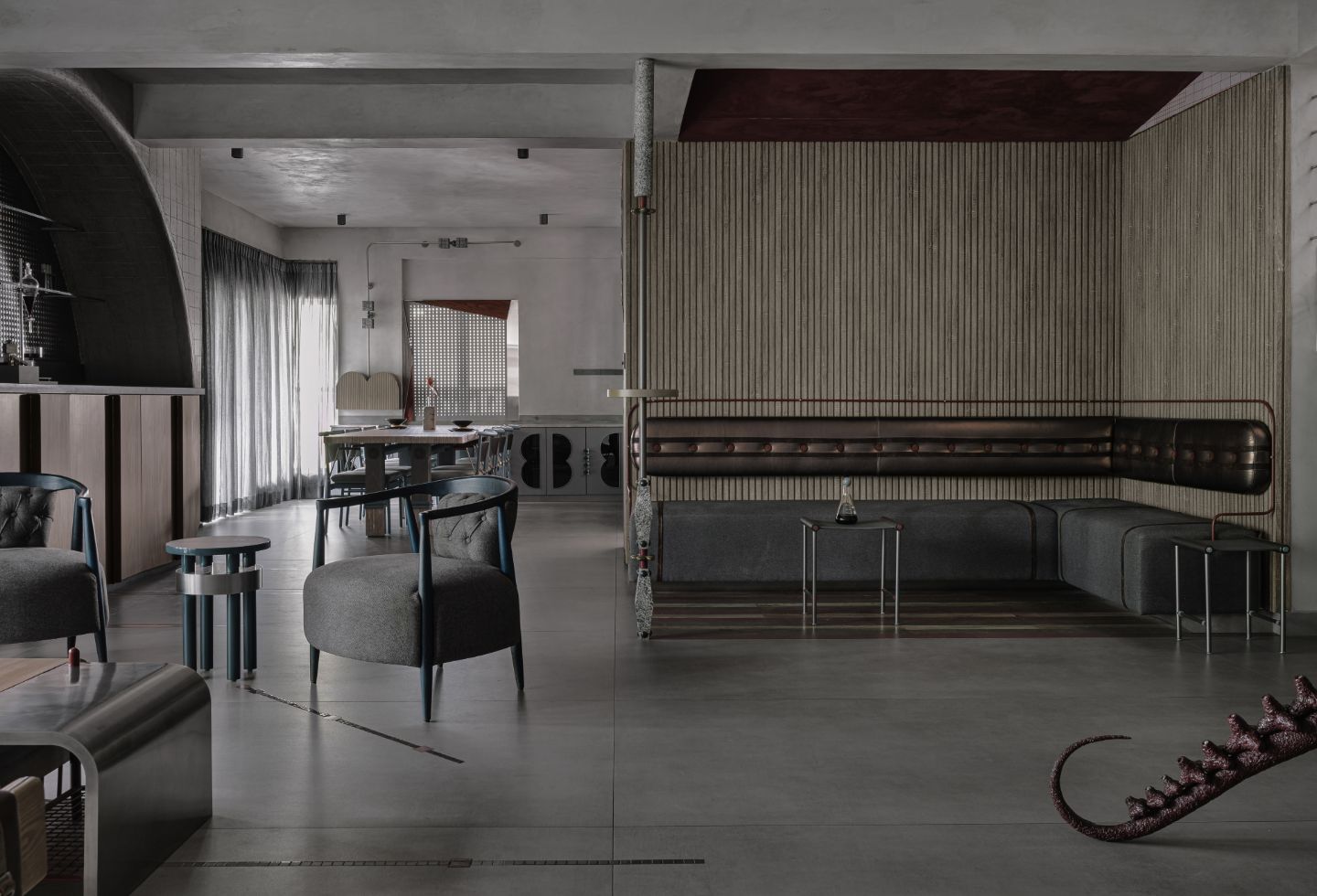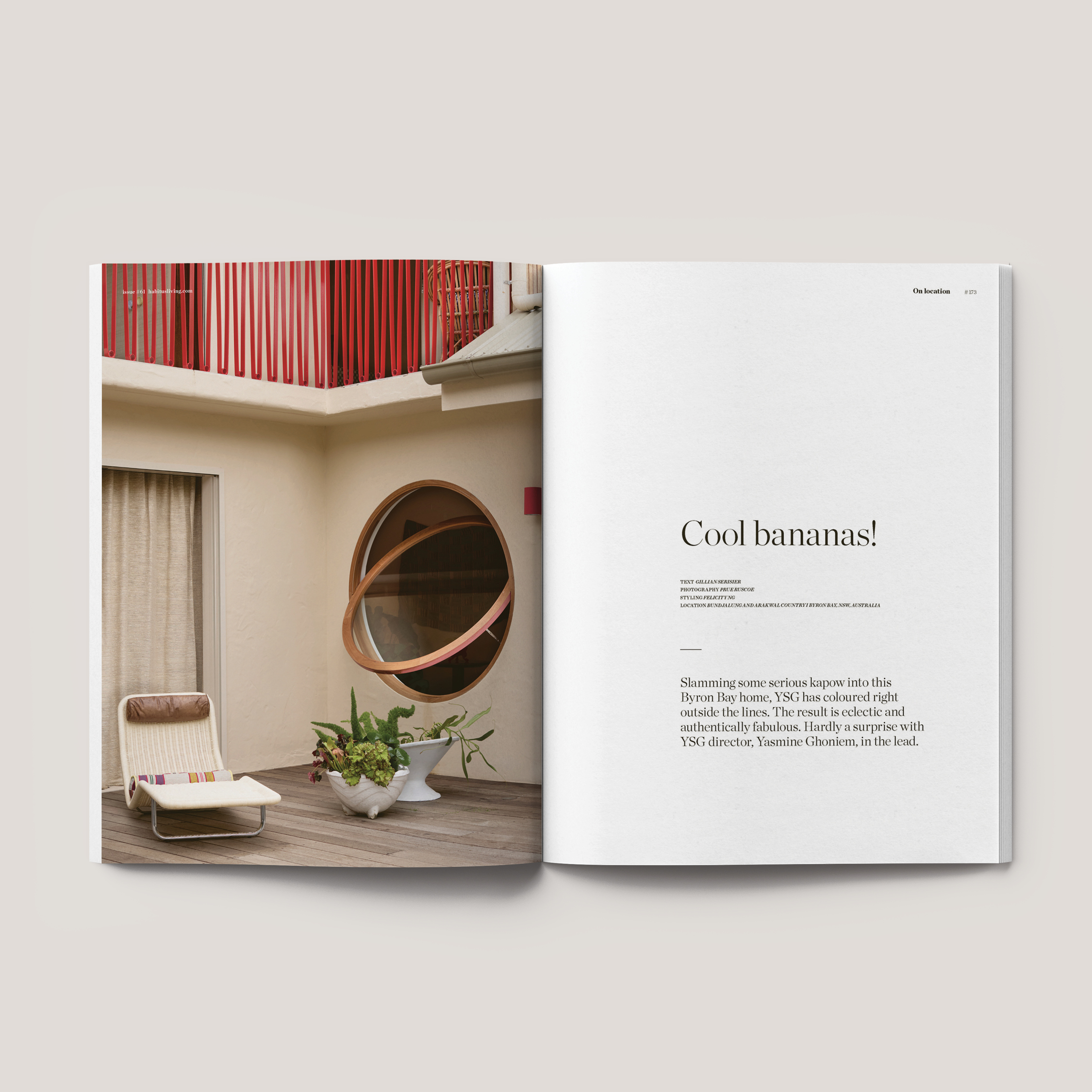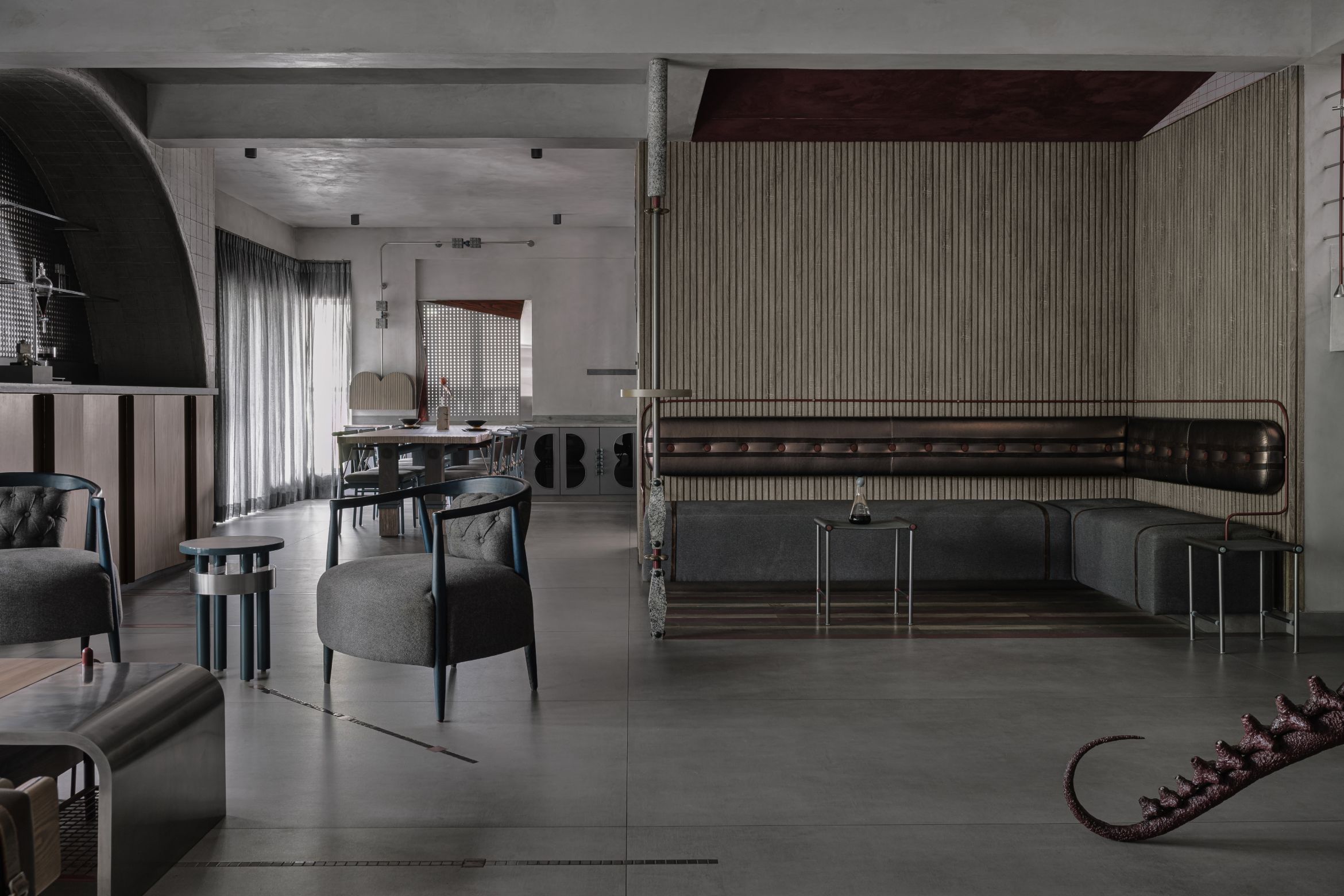If contrasting elements generate a sense of dynamism in a design, then the nearly 420-square-metre apartment, intriguingly titled ‘Pearls on Swine,’ by Bengaluru (Bangalore)-based creative studio Multitude of Sins (MOS) has a refined vigour.
As MOS designer-in-chief, Smita Thomas, shares, the home is a response to the distinct yet contrasting philosophies of the clients: a husband and wife duo. On one hand, he favours restraint, sophistication and moody hues; on the other, she – Thomas, that is – is drawn to both fantasy and brutalism. “It’s a delightful experiment in exploring how far one can stretch the thread of familiarity,” she says about this playful, yet respectful test of limits.
While MOS have completed several boldly titled projects – including Iron Man, Big Jet Plane and Down A Rabbit Hole – Pearls on Swine is uniquely provocative. The tale behind the title centres on the couple having purchased the property over a decade ago; since then, they have upgraded their home to reflect their current lifestyle. The building’s exterior may not turn heads, but the renovated duplex is a gem – the shining pearl nestled within a rather unassuming shell (“a sea of swine” – so nothing to do with putting lipstick on a pig, after all).

Entering Pearls on Swine, you’re immediately placed into the spacious living room – the home’s heart. The absence of a traditional foyer required a solution that still valued privacy, resulting in a multi-purpose partition formed from tumbled natural stone and a wood screen playfully punctured with portholes. Intentionally or not, the partition provides an echo to Anupama Kundoo’s late ’90s Wall House, as does the library’s curving stone ceiling.
Another linkage that Thomas shares with the likes of Kundoo, Studio Mumbai’s Bijoy Jain or Thumbimpressions is a respect for local artisans and craftspeople. The stone and metalwork, as well as intricate inlays, speak to this. Take the design of the bar, which sits at the transition of the living room and dining area. The angular handles extend to the floor, where their shape is extended in a cut tile inlay – a detail that “took hours of painstaking precision.”
Outside is a well-appointed gym accentuating the clean lines of structured shelving and equipment, but this belies the fantastical features that have been woven into the scene. For instance, a tiled mural of the couple’s beloved cat, Coco; and the merlon-embrasure pattern of a castle’s parapet wall running next to the exercise bars.

As a point of emphasis to the juxtapositions found on the outdoor terrace, there is then the “crucible of relaxation and vitality” – an elevated hammock. Surely the site of many playful heckles, as one sweats through a workout, and the other restfully taps out amongst the trees.
Transitioning from the terrace to the master bedroom, you encounter an inviting dark grey corduroy daybed lying next to a folding window. Encouraging you to nestle in and exercise your brain, as well as your brawn just outside.
The ever-present push and pull between minimalism and maximalism continues as you venture deeper into the home’s second level. The uncluttered and unadorned home office is conceived as the “gentleman’s sanctum of thought.” The expansive glass found welcomes in the lush Bengaluru tree canopy – conducive to contemplation. Meanwhile, the nearby dressing area shimmers in sparkling maximalism. Still carefully crafted, the cabinetry shines, lighting up the master bedroom, while concealing vast storage solutions.

Returning downstairs is an item that may best speak to the personal nature of this project, the multi-material divider separating the kitchen from the dining area. Impressed into the cast concrete slab are the names of the couple’s pets, and the entire structure is ‘dog-proof’ to allow their canine companions to “freely express their instincts without causing damage.”
Every detail of ‘Pearls on Swine’ is a testament to the homeowners’ personalities, passions and pursuits. It is, above all, a deeply idiosyncratic and personal project. The home embraces tensions and juxtapositions, so the design is no longer about their individual elements – his or hers – but rather becomes distinctly theirs.




















